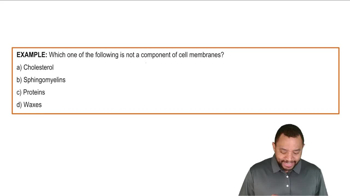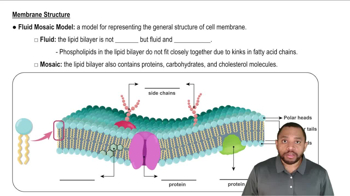Based on the information in Section 23.7, how would you expect each of these common metabolites to cross the cell membrane?
a. NO (nitrous oxide)
 Verified step by step guidance
Verified step by step guidance Verified video answer for a similar problem:
Verified video answer for a similar problem:



 :50m
:50mMaster Cell Membranes Concept 1 with a bite sized video explanation from Jules
Start learning